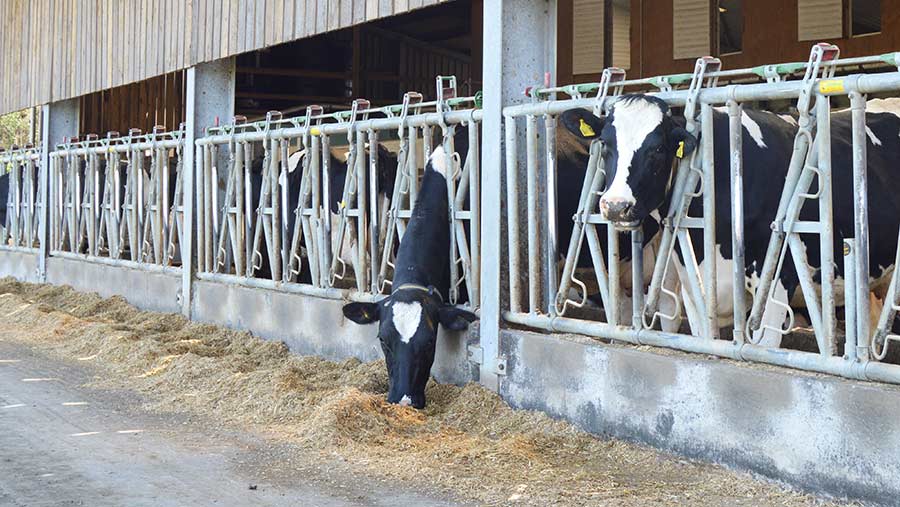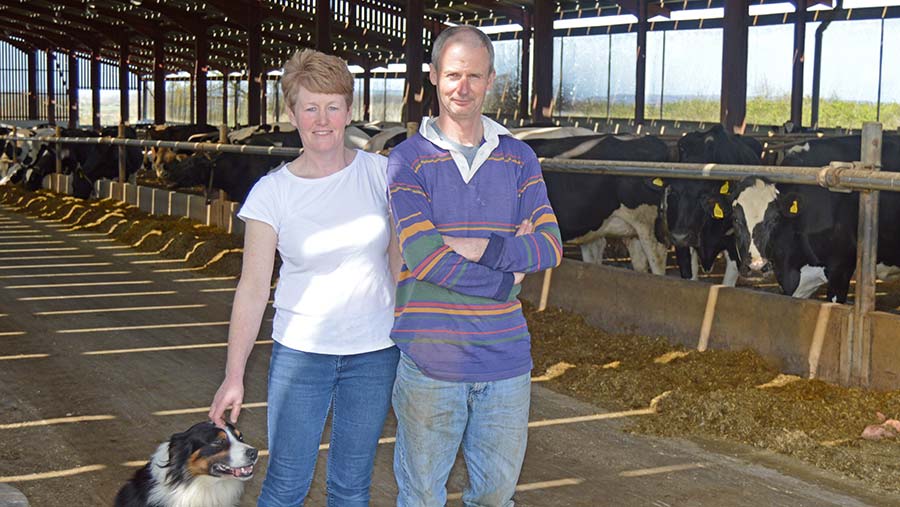How a farmer-led project helps dairies reduce antibiotics use

Antibiotics are a hot topic on dairy farms across the UK, with many producers working to cut their use to meet government or milk contract targets.
While many of these targets are enforced by legislation, Bristol University PhD student Lisa Morgans has explored whether it is more effective to put decision-making in the hands of farmers, through a participatory approach to antibiotics reduction.
Farmers Weekly takes a look at what the project involved, the key outcomes, and how one farmer in Dorset has benefited from being involved.
About the project
- Project started in 2016, funded by AHDB Dairy.
- Based on a Danish model – Stable Schools – which has been adopted into legislation to help reduce antibiotics use in the country.
- Participation from 30 dairy farms in south-west England.
- Farms split into five farmer action groups.
- The groups visited each other’s farms twice in two years to discuss medicine use, herd health and how they could reduce antimicrobials use, making for one meeting every four to six weeks.
- At each visit, the farmers devised an action plan – highlighting areas where antibiotics use could be reduced and how to do so.
- Each farm implemented at least one action point. An average 54% of each action plan had been completed by the close of the project, with many recommendations still ongoing.
Project outcomes
- Improved knowledge of drug use Farmers gained a greater awareness of antimicrobial categories and status, allowing them to make better decisions about treatment.
- Reduced medicine use Doses of critically important antimicrobials reduced from year one to year two.
- Improvements to cow environment Lime used on top of sand on cubicles to prevent infection.
- Better lameness management Earlier detection, regular foot-trimming and blocks, and using anti-inflammatories instead of antibiotics.
- Development of youngstock housing Reducing drafts, ensuring snug, warm, dry areas and thinking about temperature control to reduce the risk of calf illness.
- Increased colostrum monitoring Measuring quality and looking at how quickly and how much calves received to build immunity from disease.
- A change to the drugs being used Changing the type of antibiotic used or looking at alternative options, such as anti-inflammatories.
- Improved communication Extremely positive, constructive relationships between farms – putting control into farmers’ hands increased the likelihood of action being taken.
Case study – Bryony and Robert Symms, Dorset

© Hayley Parrott
Bryony Symms and her husband, Robert, are among the 30 dairy farmers in the South West who enrolled in the two-year project.
Their family-run Bastons Farm, near Sherborne, Dorset, is home to 220 pedigree Holstein cows, supplying milk to Müller on a Co-op contract.
Farm facts
- Batsons Farm, Sherborne, Dorset
- 186ha
- 220 milking cows plus 150 followers – breeding all replacements
- Pedigree Holstein herd (Symba herd)
- Indoor system, calving year round
- Milk sold to Müller on a Co-op contract
It was due to an increasing focus on antibiotics use from their milk buyer that the family decided to get involved with the project.
“With the Co-op contract, antibiotics use is monitored and benchmarked quarterly, so we were keen to learn more about how we could reduce their use,” explains Mrs Symms.
See also: 4 ways US dairy has cut antibiotics in lactating cows
As part of the project, the 30 participating farms were broken down into five farmer action groups.
The family were the first in their group to host fellow farmers. “At the end of the meeting, we created an action plan with Lisa. These were suggestions on where we could cut out or reduce antibiotics use,” says Mrs Symms.
“One of the big things we have learned is to question whether we really need to use antibiotics in specific situations and what the alternatives are.”
The farm has used this approach to address mastitis. “If we spot swelling and only a few clots, our first treatment now is to use an anti-inflammatory instead of going straight to an antibiotic,” says Mrs Symms.
Putting a greater focus on environmental conditions has also proved beneficial.
“Factors like ensuring cubicles have deep sand bedding and being very thorough with teat preparation are key. We are definitely using fewer antibiotics now and mastitis is at an all-time low – down to an average of 1.25 cases a month.”
Inadequate calf housing proved to be increasing the need for antibiotics intervention on farm. “Previously, we had a fairly big issue with cryptosporidiosis.
“Despite dosing with Halocur, I was losing four heifers a year,” says Mrs Symms. “So, we designed a purpose-built calf shed which was completed last October. Since we have had the youngstock in there, we haven’t had a single calf death from illness.”
An important message has been gaining a greater understanding of antimicrobial categories and dosage.
“The question was raised about whether farmers were not getting results due to miscalculating dosage rates, and we found we were massively underdosing, so animal health wasn’t improving.”
Meeting RUMA targets is a large part of the Symms’ milk contract, and gaining a better understanding of drug categories has helped them stay well below the threshold.
“Before the project, we were using Pen-Strep regularly, which is a very heavy antibiotic,” says Mrs Symms. “We switched to using Betamox, and while we are waiting on the results from the Co-op, we are fairly confident we should be well within target.”
